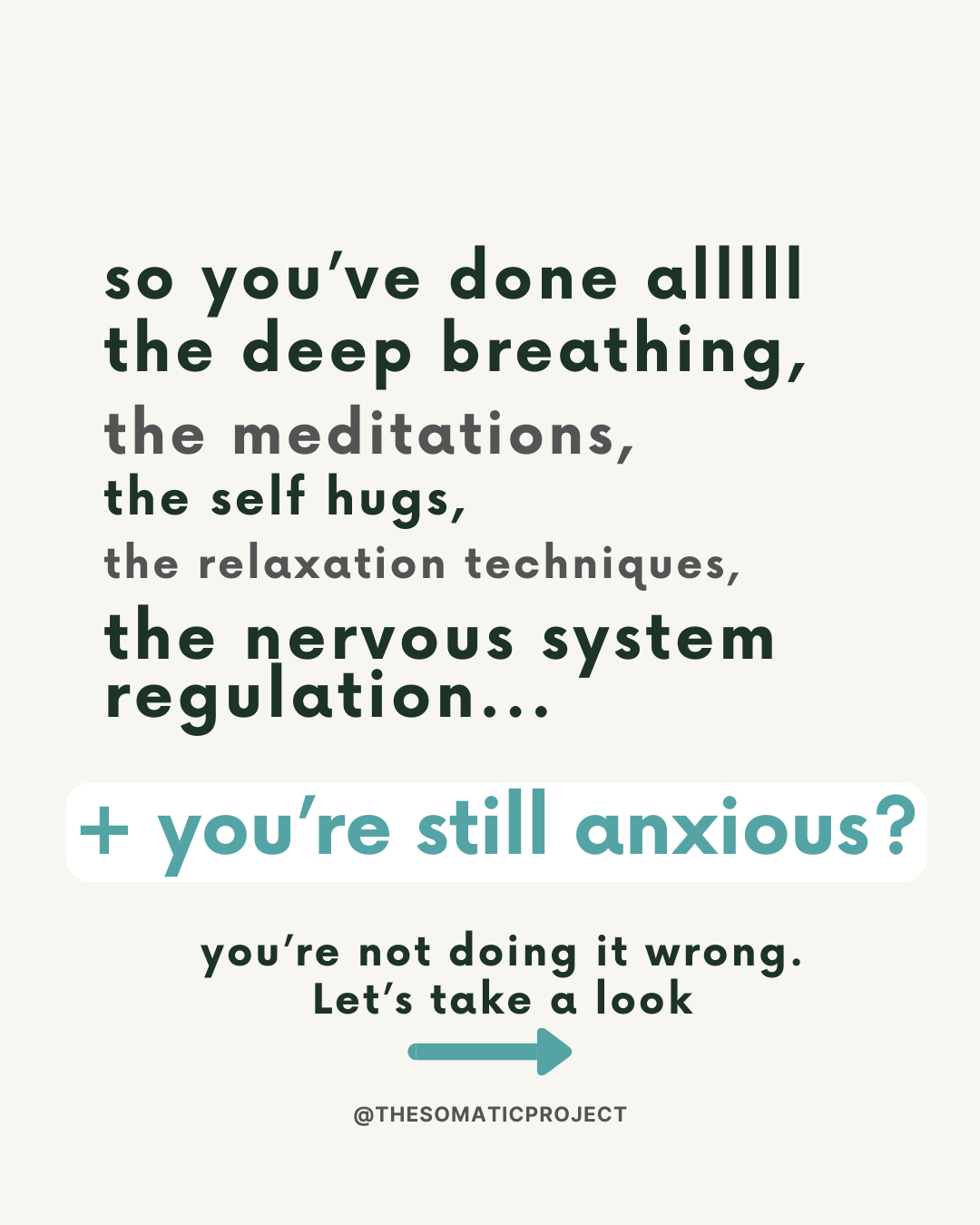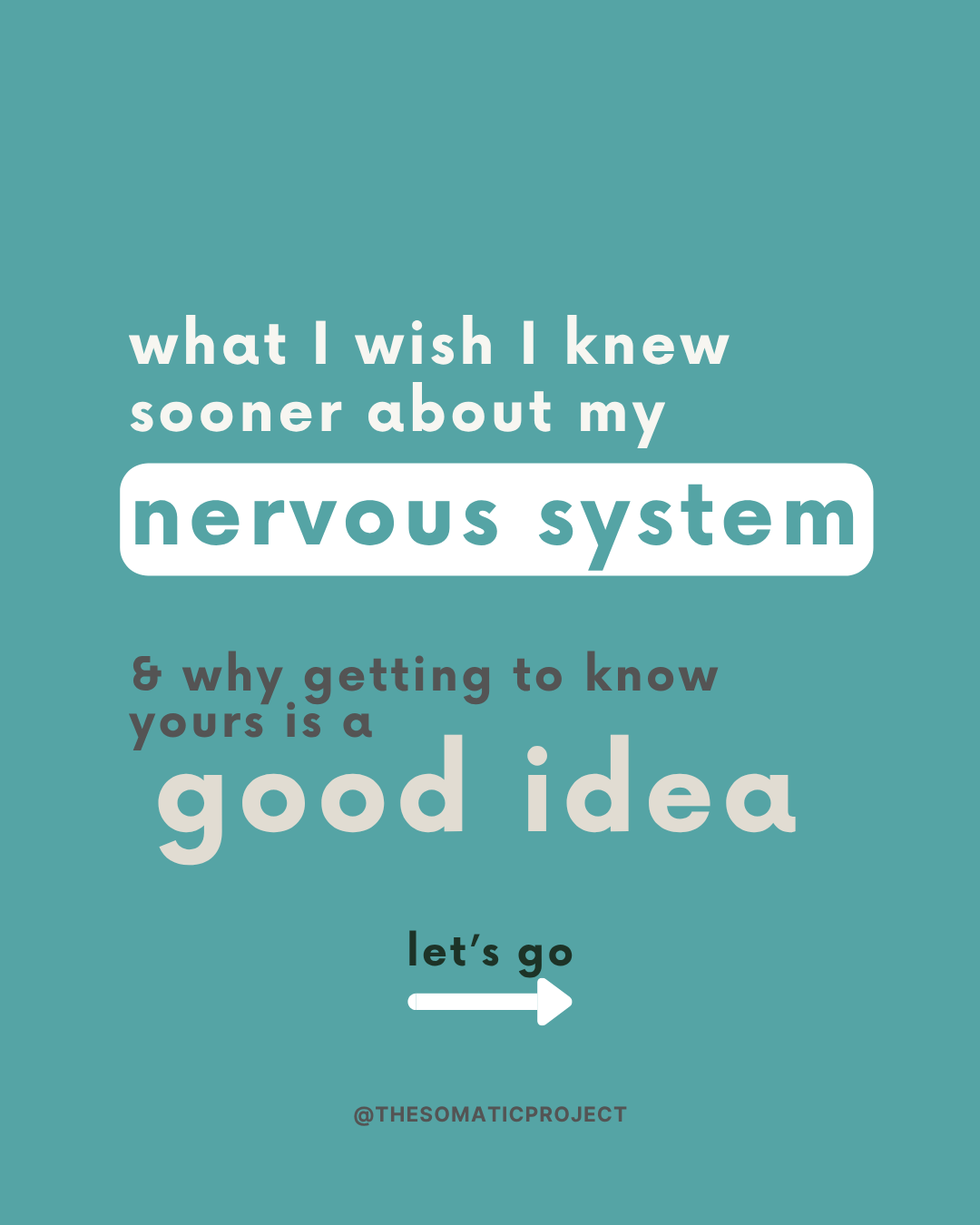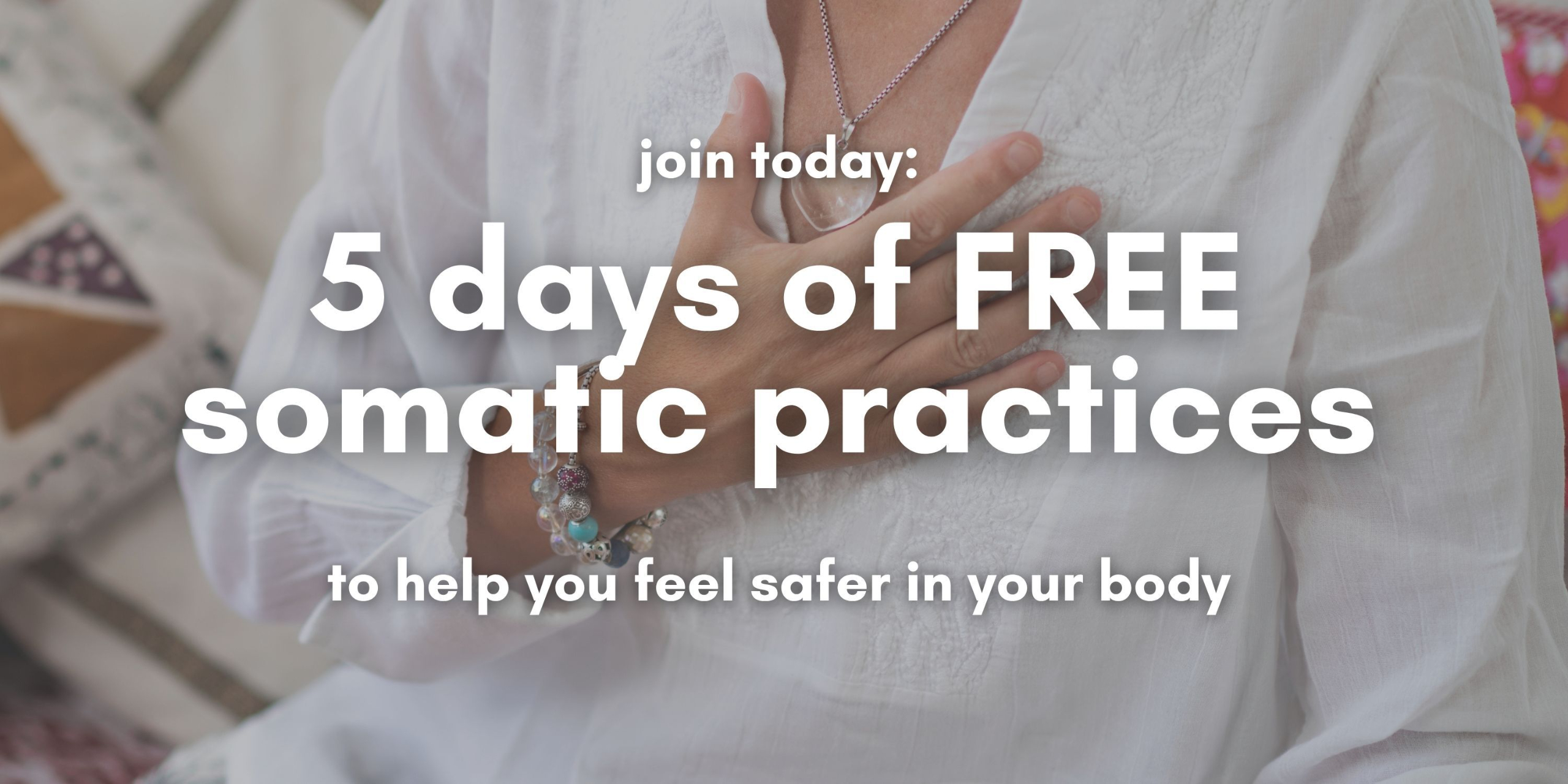
What is Somatics? A deep dive into body-based healing
Explore how somatic practices reconnect you to your body, regulate your nervous system and support trauma-informed healing...
Contents
Introduction
In a world that values thinking, analysing and constant doing, many of us have become disconnected from our bodies. Yet our body is the foundation of everything we experience. It holds our sensations, emotions and instincts, and communicates what words often cannot.
At The Somatic Project, we believe that true healing, resilience and connection begin when we come back to the body. The word somatic comes from the Greek soma, meaning "of the living body" (Hanna, 1988). Somatics is the study and practice of that living, sensing experience within us; a return to the wisdom that is already there.
In this article, we’ll explore what somatics is, how it differs from traditional mind-only approaches, and how different forms of somatic practice can help you restore regulation, balance and connection. You’ll also discover how our Somatic Self Healing approach combines nervous-system education with simple, body-based methods to support trauma-informed recovery and everyday wellbeing.

What Does Somatics Really Mean?
At its heart, somatics is about turning awareness inward and learning to sense the body from within. It is the practice of listening to your internal world; to sensations, impulses, breath and movement as a way to restore connection and coherence between mind and body.
Somatic work invites us to recognise that what happens in the body matters just as much as what happens in the mind. It honours the body as a source of wisdom and healing, rather than something to control or override.
Where traditional talk therapy often focuses on thoughts, beliefs and behaviours, somatic approaches include the body and the nervous system in the healing process. This is not about performing exercises or forcing outcomes, but about noticing and responding to the body’s own language. Through this awareness, we begin to release tension, build regulation and rediscover a sense of safety within ourselves.
In somatic practice, the body is not broken or something to fix; it is an intelligent system that holds our stories, our defences and our capacity for transformation. When we learn to listen, the body becomes an ally on the path to healing.
Why Somatics Matters: The Case for Body-First Healing
We’re beginning to understand what ancient wisdom and modern neuroscience both tell us: healing doesn’t happen in the mind alone - it happens through the body (van der Kolk, 2015). Chronic stress, anxiety, and trauma are not just mental or emotional experiences; they are physiological patterns that live in our muscles, breath, posture, and nervous system (Levine, 1997).
As Dr. Pat Ogden, pioneer of Sensorimotor Psychotherapy, explains:
“The body’s responses are the foundation of our emotional life. Working directly with these responses allows for a more complete resolution of trauma.”
— Dr. Pat Ogden, Trauma and the Body (Ogden, Minton and Pain, 2006)
When we approach healing through a body-first lens, we begin to include the very system that holds our history, and our potential for change. The nervous system is the hardware of safety, connection, and calm. Through somatic techniques, we can learn to regulate this system rather than simply manage symptoms at the surface.
Somatic healing also invites embodied integration: moving from knowing about ourselves to feeling ourselves. Transformation becomes deeper and more sustainable when the body participates.
Because trauma often bypasses our thinking mind and lodges in our physiology, somatic approaches offer a gentle, trauma-informed way to work with what words alone cannot reach.
And perhaps most importantly, somatics helps us come home to an authentic self-connection - to the felt sense of being alive, present, and whole.
This is the heart of The Somatic Project: guiding you to reconnect with your body through kindness, compassion, and curiosity, so that healing becomes not something you strive for, but something you feel.

Types of Somatic Healing Practices
There are many different types of somatic practices, including yoga, breathwork, mindfulness, Somatic Experiencing, applied polyvagal theory, somatic parts work and more. Each of these practices has its own unique approach, but they all share a common goal: to help us connect more deeply with our bodies and use that connection to improve our overall well-being.
Somatic Yoga
The word 'yoga' means union between the mind, body and soul - it is the original somatic practice. Although some yoga classes promote fitness and flexibility, true yoga is all about connecting with the experience in our bodies; movement and sensations. In somatic yoga, we focus our awareness on the body and use movement, sensation and the breath alongside attitudes of acceptance and non-judgement to help us connect with our embodied experience, release tension, tone the vagus nerve and regulate the nervous system (Porges, 2011; Dana, 2018). Focussing our mind on our body has a calming effect, which promotes healing and integration, making it a powerful tool for working with anxiety and other stress-related conditions.

“Ten weeks of yoga practice markedly reduced the PTSD symptoms of patients who had failed to respond to any medication or to any other treatment.”
— Bessel van der Kolk, The Body Keeps the Score (van der Kolk, 2015)
Breathwork
Breathwork is a powerful somatic practice because it helps to regulate the nervous system, alter our neurobiology (e.g. reducing cortisol and toning the vagus nerve) and our energy (Brown and Gerbarg, 2005). Our breathing has a profound effect on the way that we feel so making changes to the breath changes our feelings, which also changes the quality of our thoughts. We can also learn a lot from our body about how we respond to certain situations by noticing our breathing; when we experience stress, our breathing can become shallow and rapid, which can exacerbate feelings of anxiety and tension in the body and worried thoughts in the mind. By learning to regulate our breath and bring awareness to our breathing patterns, we can shift the body into a more relaxed and grounded state (Dana, 2018).
Somatic Experiencing (SE)
Somatic Experiencing is a therapeutic approach designed to help people recover from trauma and other stress-related conditions by focusing on bodily sensations and experiences. It was developed by Dr. Peter Levine, a somatic psychologist and expert in stress and trauma (Levine, 1997).
The central idea behind Somatic Experiencing is that traumatic events can cause a kind of "stuckness" in the body, where the nervous system gets stuck in a state of fight, flight, or freeze. This occurs when our instinct to run or fight are 'thwarted' e.g. we are trapped or helpless in a situation. This stuckness can lead to physical symptoms like tension, pain, and fatigue, as well as emotional symptoms like anxiety, depression, and numbness.
Through Somatic Experiencing, people are taught to gently tune in to their body's sensations and turn towards any challenging sensations - as these are the gateway to healing. By bringing attention to these sensations and learning to work with them in a safe and supportive environment, people can release the energy that has been trapped in the body and move towards greater healing and resilience.
Eye Movement Practices
Our eyes are connected to our nervous system and therefore to the way we feel (Corrigan, 2014). Have you ever noticed how when you're stressed or anxious your vision changes? It might get very focussed or even go in to 'tunnel vision'? Whereas when we feel safe our eyes tend to have a softer focus and take in more of our environment. Our eye movements are linked to our autonomic nervous system and so by intentionally moving our eyes (e.g. softening the gaze, bilateral movement and shifting focus) we can help regulate our nervous system state, reduce stress and anxiety, and promote a greater sense of well-being.
Body-Mind Centering
is a somatic practice that focuses on the development of embodied awareness, or the ability to sense and respond to our bodies in real-time (Cohen, 2012). This practice can help us to overcome anxiety and stress by giving us a greater sense of control over our thoughts and emotions.
Applied Polyvagal Theory
This framework, originally proposed by Stephen Porges, gives us a map of the autonomic nervous system from a “body-first” vantage: how we automatically scan for safety or threat (a process called neuroception), how our body shifts through states of social engagement (ventral vagal), mobilisation (sympathetic) or shutdown (dorsal vagal) (Porges, 2011).
Using applied polyvagal theory you can learn to identify these states in yourself via felt-sense awareness, track how your body moves between them, and practice gentle regulation tools that support movement toward the ventral vagal/social-engagement zone. We emphasise that the goal isn’t eliminating the other states, but developing flexibility - the ability to shift, be present, respond, and return (Dana, 2018).
Somatic Parts Work
Somatic Parts Work is an embodied approach to understanding the different “parts” or aspects of ourselves that live within the body and nervous system (Schwartz, 1995; Fisher, 2017). These parts often hold specific emotions, memories, or protective strategies that once helped us survive, but may now contribute to patterns of stress, anxiety, or self-criticism.
Through curiosity and compassion, we can begin to notice these bodily cues and communicate with our parts directly. Unlike purely cognitive forms of inner-parts work, somatic parts work happens through felt experience rather than cognitive analysis. It recognises that our protective and wounded parts are held in our nervous system and tissues, not just our thoughts. When we bring them into awareness with safety and compassion, the body integrates what was once fragmented. This creates a deeper sense of wholeness - where every part of you belongs, and healing can unfold naturally from within.
“Healing trauma is not about becoming who we were before, but about integrating all parts of ourselves with compassion.”
— Dr. Arielle Schwartz, The Post-Traumatic Growth Guidebook (Schwartz, 2020)

How we approach somatic healing at The Somatic Project
At The Somatic Project, our approach to somatic healing is rooted in science, compassion and lived experience. We recognise that healing doesn’t happen through a single technique or moment of release, but through consistent, embodied practice that restores a sense of safety, capacity and connection in the body. Our work brings together nervous-system education, trauma-informed movement and mindful awareness to help you gently build regulation from the inside out.
Our Guiding Principles
Safety first.
All somatic healing begins with safety. Before we invite change, we help the body remember what grounded, supported and safe feels like. Only from that place can the nervous system begin to soften and release old survival patterns.
Education meets embodiment.
Understanding the science of your nervous system brings clarity and confidence - but knowledge alone doesn’t create change. We combine psychoeducation with lived, body-based practice so that what you learn becomes something you can feel and return to.
Gentle, step-by-step process.
Healing doesn’t have to be intense to be effective. Our programmes are intentionally paced to help you build capacity slowly, without overwhelm or emotional flooding. Small, consistent practices create lasting transformation.
Connection and curiosity.
Rather than striving to “fix” the body, we approach it with curiosity and care. Every signal - tension, breath, posture, sensation - holds valuable information about your internal world. When we listen, the body begins to trust again.
Empowerment through self-regulation.
You are the expert on your own body. Our role is to guide you back to your innate ability to self-soothe, regulate and restore balance. This is not about doing more, but about doing less - and learning to meet yourself with compassion.
Somatic Self-Healing: A path you can begin now
Somatics isn’t reserved for therapists or advanced practitioners - it’s for anyone ready to reconnect with their body and rediscover a sense of calm, resilience and presence.
Our signature programme, Somatic Self Healing, is a self-paced online journey that combines science, embodiment and gentle practice to help you move from survival to safety, from disconnection to reconnection.
Through guided movement, breathwork, mindfulness and reflection, you’ll learn how to:
-
Understand your body’s stress responses and build awareness of your nervous-system states.
-
Use accessible somatic tools to regulate and release held tension.
-
Reconnect with your body through kindness, not control.
-
Create a sustainable, compassionate relationship with yourself - one that supports your healing every day.
By engaging in Somatic Self Healing, you begin to rebuild trust with your body and reclaim your innate capacity for safety and connection. Healing isn’t about forcing change - it’s about remembering what your body already knows.
Ready to step into your body, regulate your nervous system and reconnect to your innate healing capacity? Explore Somatic Self Healing today.
References
Brown, R. P. and Gerbarg, P. L. (2005) ‘Sudarshan Kriya yogic breathing in the treatment of stress, anxiety, and depression: Part I—neurophysiologic model’, Journal of Alternative and Complementary Medicine, 11(1), pp. 189–201.
Cohen, B. B. (2012) Sensing, Feeling, and Action: The Experiential Anatomy of Body-Mind Centering. Northampton, MA: Contact Editions.
Corrigan, F. (2014) Healing the Traumatized Self: Consciousness, Neuroscience, Treatment. New York: W. W. Norton & Company.
Dana, D. (2018) The Polyvagal Theory in Therapy: Engaging the Rhythm of Regulation. New York: W. W. Norton.
Desikachar, T. K. V. (1995) The Heart of Yoga: Developing a Personal Practice. Rochester, VT: Inner Traditions.
Fisher, J. (2017) Healing the Fragmented Selves of Trauma Survivors: Overcoming Internal Self-Alienation. New York: Routledge.
Hanna, T. (1988) Somatics: Reawakening the Mind’s Control of Movement, Flexibility, and Health. Reading, MA: Addison-Wesley.
Levine, P. A. (1997) Waking the Tiger: Healing Trauma. Berkeley, CA: North Atlantic Books.
Maté, G. (2003) When the Body Says No: The Cost of Hidden Stress. Toronto: Vintage Canada.
Ogden, P., Minton, K. and Pain, C. (2006) Trauma and the Body: A Sensorimotor Approach to Psychotherapy. New York: W. W. Norton.
Payne, P., Levine, P. A. and Crane-Godreau, M. A. (2015) ‘Somatic experiencing: Using interoception and proprioception as core elements of trauma therapy’, Frontiers in Psychology, 6, p. 93.
Porges, S. W. (2011) The Polyvagal Theory: Neurophysiological Foundations of Emotions, Attachment, Communication, and Self-Regulation. New York: W. W. Norton.
Schwartz, C. (2020) The Post-Traumatic Growth Guidebook: Practical Mind-Body Tools to Heal Trauma, Foster Resilience, and Awaken Your Potential. Boulder, CO: Sounds True.
Schwartz, R. C. (1995) Internal Family Systems Therapy. New York: Guilford Press.
van der Kolk, B. A. (2015) The Body Keeps the Score: Mind, Brain and Body in the Transformation of Trauma. New York: Viking.









